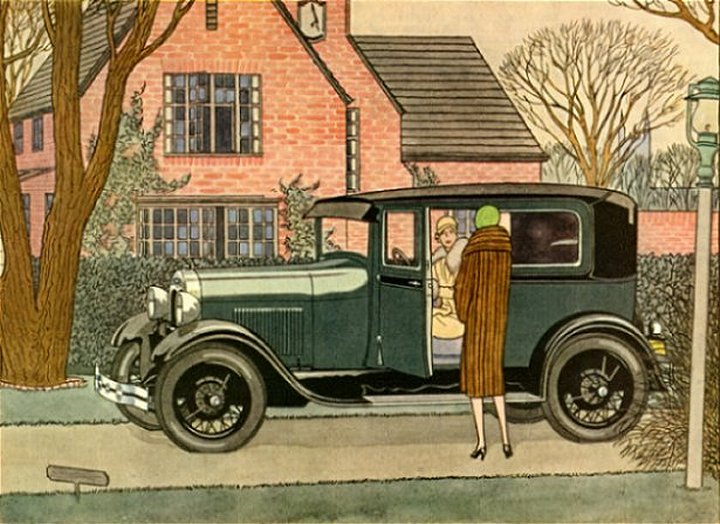How the Ford Model A Helped Reshape America: A Civic and Economic Revolution on Wheels
When Ford Motor Company sold the first unit of its new Model A in July 1927, it was much more than the launch of another car—it was a pivotal moment that reshaped American industry, the economy, and the everyday lives of citizens. The Model A marked the end of the Model T era and the beginning of a new chapter in American manufacturing and community life. It reflected how innovation in the private sector could drive broad civic change—connecting people, shaping cities, and helping the suburbs grow.
From Model T to Model A: Reinventing American Manufacturing

By the 1920s, the Model T had revolutionized transportation, making the automobile affordable to ordinary Americans. But by the mid-1920s, it had fallen behind consumer expectations. Competing companies like General Motors were offering sleeker, more modern cars. Henry Ford, whose original focus was on simplicity and efficiency, initially resisted change. But his son, Edsel Ford, recognized that American buyers were seeking cars that matched the modern age—products that were not only functional but stylish and desirable.

In 1927, Ford shut down its entire production system—a bold move in a fast-moving industry—to redesign both the car and its manufacturing process. The company’s Highland Park plant was retooled, and production was shifted to the massive new River Rouge complex, a marvel of modern industrial design. Ford’s gamble paid off. The Model A became a symbol of modern manufacturing—emphasizing flexibility, style, and the ability to meet changing consumer needs.
This reinvention also inspired other industries to modernize and invest in their workforces and facilities. In doing so, Ford contributed to the broader growth of America’s industrial economy during the late 1920s and early 1930s, creating jobs and raising wages for thousands.
An Affordable Car that Connected America
Selling for as little as $385, the Model A remained within reach for middle-class and even working-class Americans. Its affordability had important civic consequences. First, it allowed millions of Americans—both urban and rural—to own cars and gain greater mobility. That mobility, in turn, connected towns and cities, boosted commerce, and gave families greater access to work, education, and recreation.
Affordable cars like the Model A also helped shape American infrastructure. As more people bought cars, there was greater demand for better roads and highways. Governments at the local, state, and federal levels responded with new road-building programs, laying the groundwork for today’s national highway system.
Fueling the Rise of the Suburbs
Perhaps most significantly, the affordability of the Model A helped enable the growth of American suburbs. Before widespread car ownership, most people needed to live near where they worked, often in crowded city centers. But cars gave workers the freedom to live farther away—in suburban neighborhoods that offered more space, quieter streets, and new civic institutions like schools, parks, and libraries.
As families moved to the suburbs, new patterns of civic life emerged. Suburban development brought challenges—such as traffic congestion and environmental concerns—but it also reshaped how Americans viewed their communities and their roles as citizens. Owning a car became part of American identity, connected to ideas of freedom, opportunity, and civic engagement.
The Broader Legacy of the Model A
By the time production ended in 1932, Ford had sold nearly 5 million Model As. But the car’s true legacy was even bigger. It had helped change the way Americans lived, worked, and connected with one another. It spurred innovations in manufacturing that influenced industries well beyond automobiles. It supported economic growth during a turbulent era. And it contributed to the reshaping of America’s physical and civic landscape—helping knit together a modern nation of towns, cities, and suburbs.
Today, the Model A remains an icon of American ingenuity and resilience. Its story is a reminder of how private innovation can help drive public progress—and how a simple machine can help transform a society.

